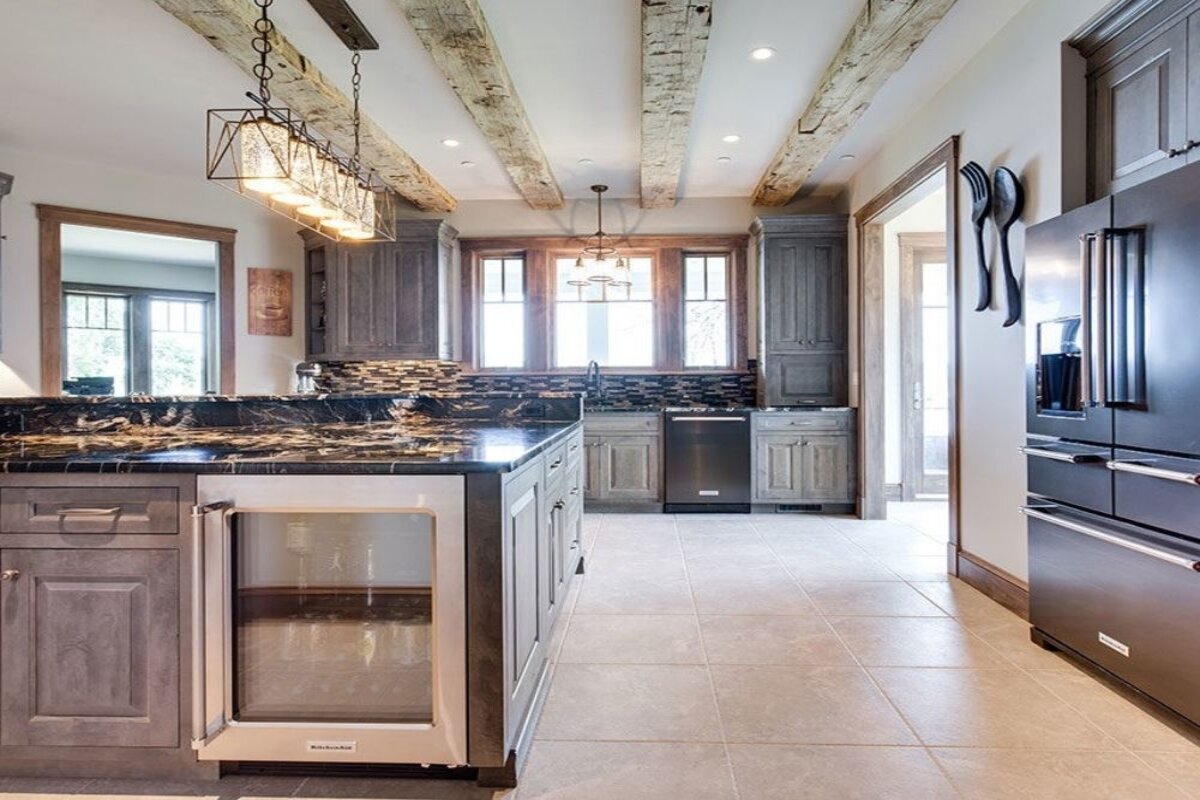When it comes to choosing the perfect flooring for your home, ceramic tile flooring is often on the shortlist. This versatile material has been a staple in home design for years, offering a range of colors, patterns, and finishes that can complement any aesthetic.
In this article, we’ll take a close look at the advantages and disadvantages of ceramic tile flooring to help you decide if it’s the right choice for your space.
Pros of Ceramic Tile Flooring
Ceramic tile flooring offers numerous benefits that have made it a popular choice among homeowners. One of its standout features is durability. These tiles are designed to withstand wear and tear, making them an excellent option for high-traffic areas like kitchens and hallways. Alongside durability, ceramic tiles are remarkably easy to clean.
A simple mop or sweep is often all you need to maintain their shine. Another advantage is the vast array of design possibilities. With endless colors, sizes, and patterns available, ceramic tile can seamlessly fit into virtually any home decor theme.
And let’s not forget its water-resistant properties, which make it ideal for bathrooms, kitchens, and laundry rooms. The tiles also stay cool in the summer, providing a comfortable walking surface during the hotter months.
Cons of Ceramic Tile Flooring
However, it’s essential to consider the downsides of ceramic tile flooring as well. One significant drawback is its hardness. While this contributes to its durability, it can be uncomfortable to stand on for extended periods. This might not be the best option for homes with young children or elderly family members who are prone to falls.
The material is also relatively cold, making it less than ideal in colder climates unless you’re willing to invest in underfloor heating. Installation can be a complex and time-consuming process, often requiring professional help.
And while ceramic tiles are generally affordable, high-quality or custom-designed tiles can push your budget. Lastly, ceramic tile requires a solid, even subfloor. Imperfections or weaknesses in your subfloor can lead to cracked tiles over time, which are costly and difficult to repair.
Ceramic Tile Flooring Compared To Other Materials
When weighing ceramic tile against other options, several factors place it in a league of its own. Hardwood floors are a classic choice that offers natural beauty and warmth, but they are significantly more susceptible to water damage and require consistent maintenance.
They can also be more expensive both in initial cost and long-term upkeep. Carpeting may offer a comfortable surface underfoot, particularly in bedrooms and living rooms, but it lacks the water resistance and easy-to-clean properties that ceramic tiles provide. Carpets are also more prone to staining and can harbor allergens, which might be a concern for those with sensitivities.
Laminate and vinyl flooring are often cheaper alternatives that can mimic the look of ceramic tiles. However, they usually fall short in terms of durability and the authentic tactile feel that genuine ceramic offers. Additionally, lower-quality laminate or vinyl may be susceptible to discoloration and wear over time, requiring more frequent replacements.
Conclusion
Ceramic tile flooring offers a mix of durability, easy maintenance, and design versatility that appeals to a wide range of homeowners. However, its hardness, coldness, and installation requirements might not suit everyone’s needs.
Whether you decide to go with ceramic tile flooring or explore other options, it’s crucial to weigh the pros and cons carefully to make the most informed decision for your home. If you think you’re ready to talk to an expert about your flooring project, contact Karin Ross to speak with a member of our team.










